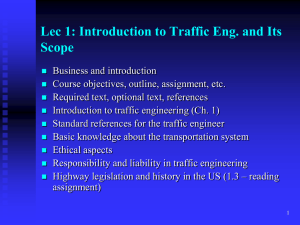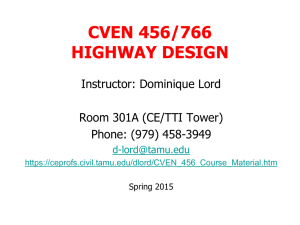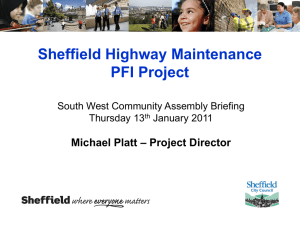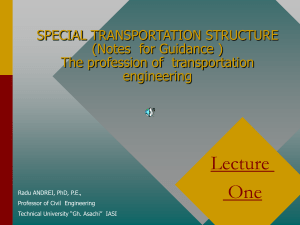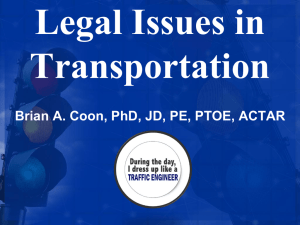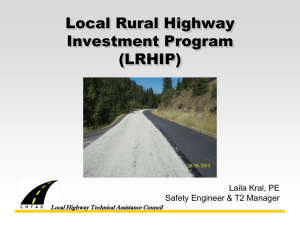Modification Orders - Herefordshire Council
advertisement
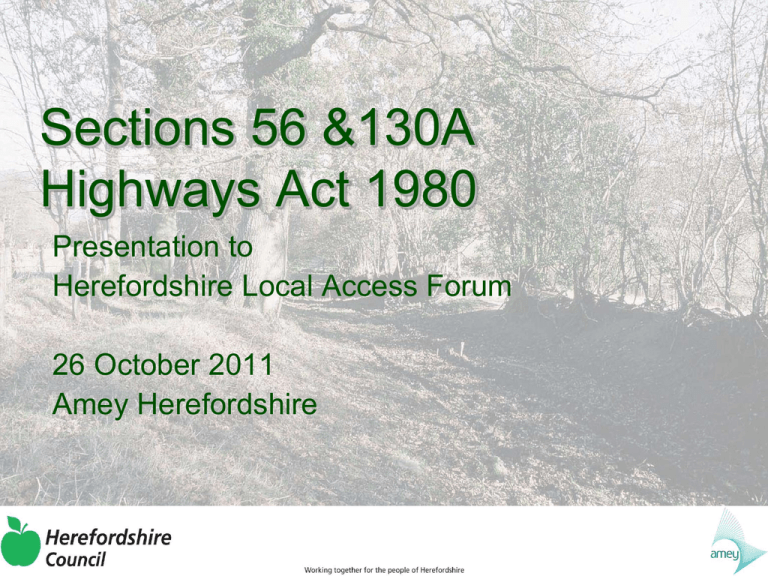
Sections 56 &130A Highways Act 1980 Presentation to Herefordshire Local Access Forum 26 October 2011 Amey Herefordshire Functions – Powers and Duties • Highway Authorities such as Herefordshire Council have a range of functions; some are duties and some are powers. • Generally, HC has a discretion to exercise a power but it must fulfill its duties. • It may have a discretion as to how it fulfills its duties. Section 41 Highways Act 1980 “The authority who are for the time being the highway authority for a highway maintainable at the public expense are under a duty … to maintain the highway.” Section130 Highways Act 1980 “It is the duty of the highway authority to assert and protect the rights of the public to the use and enjoyment of any highway for which they are the highway authority, including any roadside waste which forms part of it. … It is the duty of a council who are a highway authority to prevent, as far as possible, the stopping up or obstruction of the highways for which they are the highway authority.” Remedies • If the Highway Authority fails in its duties then members of the public should: • Contact the authority to highlight the issue • Allow a reasonable length of time for authority to act • Be prepared to send at least one reminder letter Remedies (continued) Only if these attempts fail to produce positive action, should legal action be considered as a last resort to put pressure upon the Highway Authority. There are two specific statutory remedies to force the authority to act: • Section 56 deals with highways that are out of repair • Section 130A deals with public rights of way that are obstructed The process…greatly simplified • The complainant sends the Highway Authority a notice containing the facts of the case • The Highway Authority responds to the notice either denying the case is properly made or admitting it and setting out what it proposes to do. • If the complainant is not satisfied with this response s/he may apply to the Magistrates court (occasionally the Crown Court) for an order compelling the Highway Authority to act. Section 56 – the tests to be met - 1 • The route must be a highway and be publicly maintainable • The route must be out of repair rather than obstructed “The road must be kept in such repair as to be reasonably passable for the ordinary traffic of the neighbourhood at all times of the year.” R v High Halden (1859) Section 56 – the tests to be met - 2 Barnes v Metropolitan Borough Council of Bury (1990) 'We do not consider that the situation and nature of Hawkshaw Lane require it to be maintained to the same standard as an urban street. That would be inappropriate and incongruous. We consider and order that it be: • adequately drained, and • surfaced — not necessarily with a tarmacadam surface but with something that is reasonably suitable for a country lane...'. Section 130A – the tests to be met • The route must be a footpath, bridleway, restricted byway or BOAT • The obstruction cannot be a building • The obstruction must significantly interfere with the exercise of public rights • There are not arrangements already in place to remove the obstruction within a reasonable time The importance of Herrick v Kidner (2010) • The Legal Principles • The public are entitled to unrestricted access to the whole and each part of the highway; • The right to such access is principally to pass and repass but it is also to enjoy other amenity rights; • Those amenity rights must be reasonable; • Any encroachment which prevents enjoyment of these rights is an unlawful obstruction; • The law ignores fractional obstructions; • A highway authority cannot deprive itself of the power to act against an unlawful obstruction by refraining from exercising its statutory powers, or by purporting to give consent. Conclusions 1. A valuable tool if used wisely 2. Should always be considered as a remedy of last resort 3. Can lead to a reactive approach by the Council rather than a planned, strategic approach 4. Those considering serving notices should take into account the wider public interest as far as possible Further information Section 56: http://www.iprow.co.uk/gpg/index.php/Section_56_Process http://www.ramblers.org.uk/rights_of_way/take_action/get_a_path_mai ntained Section 130A http://archive.defra.gov.uk/rural/documents/countryside/prow/guidela.pdf http://www.ramblers.org.uk/rights_of_way/take_action/get_an_obstruct ion_removed
